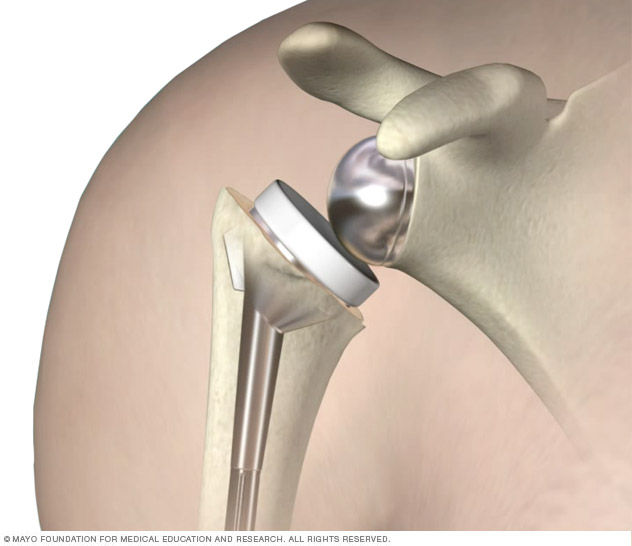A reverse shoulder arthroplasty (RSA) or replacement is characterized by changing, or “reversing”, the position of the ball and socket so that the ball is on the socket side of the joint and the socket is on the ball side. In the normal shoulder, the rotator cuff muscles help the large deltoid muscle to raise the arm. When the rotator cuff is torn and non-functional, the humeral head (arm bone) “escapes” upwards within the joint, and the deltoid is then unable to lift the arm by itself. By reversing the position of the ball and socket the loss of the normal rotator cuff is compensated for and the deltoid muscle can once again raise the arm.
Who Benefits from Shoulder Replacement Surgery?
RSA has been performed for over 25 years in Europe but has only been FDA-approved in the United States since 2003. In 2011 approximately 1/3 of shoulder replacement procedures were RSA. Approximately 80% of patients who undergo RSA do so because of arthritis and rotator cuff deficiency. Another common and increasing indication is complex fractures of the upper part of the arm bone (humerus), accounting for about 10% of reverse shoulder arthroplasty. Other indications include rheumatoid arthritis and revision arthroplasty.
The Role of Physical Therapy
Physical therapy following reverse shoulder arthroplasty is based on three important considerations: protecting the healing joint, maximizing deltoid muscle function, and establishing appropriate functional and range of motion expectations. Rehabilitation during the first 4 weeks following surgery focuses on joint protection strategies (including sling use), pain control, and gradual restoration of range of motion. Joint protection is important to minimize the risk of complications following surgery. Shoulder dislocation is one such complication that requires care during the early phases of recovery. Movements such as reaching behind the back should be avoided or minimized due to the vulnerability of the shoulder to dislocate in this position following RSA.
By the sixth postoperative week, gentle deltoid and shoulder blade muscle strengthening exercises are initiated. These exercises are important in order to regain functional use of the arm for activities of daily living (dressing, bathing, etc) and light athletic activities (tennis, swimming, etc). Normal full active range of motion following RSA is not expected in most cases. However, we have witnessed some very impressive results where individuals have recovered to the same extent, or better, than their uninvolved shoulder.
Closing Thoughts
From our experience and the latest research, recovery of functional ROM is dependent on the patient’s pre-surgery status, the extent of rotator cuff damage, and the patient’s adherence with their home exercise program. If you are considering undergoing a reverse shoulder replacement, or have recently undergone this procedure, please call one of our physical therapists to learn more about your recovery and return to function.


